Photo by Katy Morikawa
Audio
Or listen wherever you get your podcasts.
At the end of Consider the Borer Bee (Episode 24), now a few weekends ago, Michael and I built some cute bee houses for my friend and for our own house, inspired by the veritable plethora of DIY YouTube videos and Amazon products for housing solitary bees. The idea behind these houses is that you can deter borer bees from your wood siding by providing ready-made housing which they prefer over the far greater effort involved in drilling their own. We hung the bee houses in likely spots per my original research: high on a south facing wall and out of high traffic areas or near current nesting locations. For a week, our bee house remained empty with not a single curious visitor, unlike the videos I saw on YouTube. The report from the friend’s house where I hung the houses next to where the bees were actively drilling–was the same: Empty! Drat!
The Failed Bee House
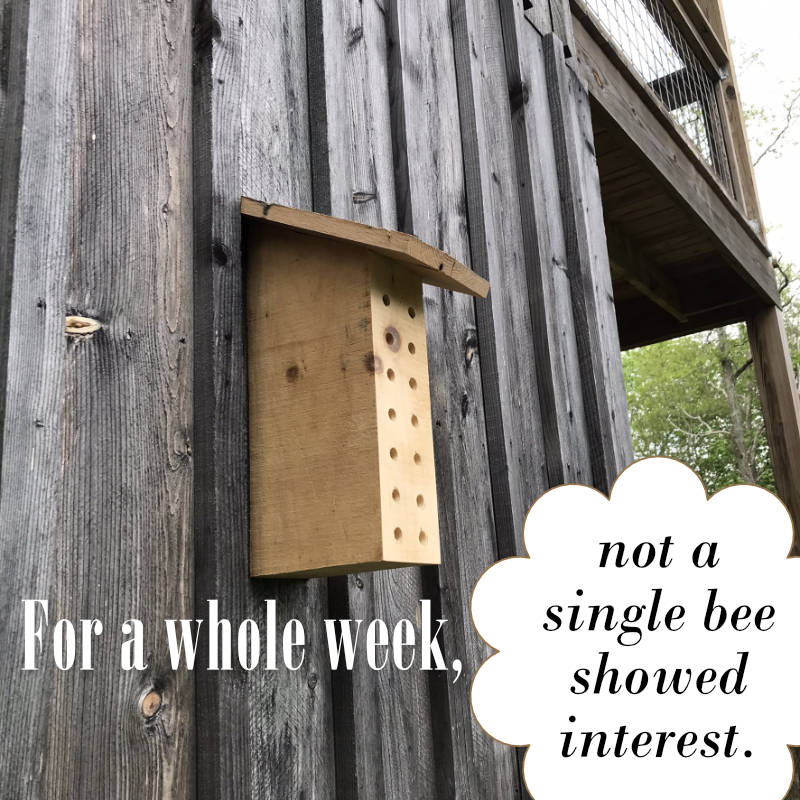
So, I was feeling very depressed. What was I doing wrong? The videos all showed bees flying up right away to check out the holes drilled even into random chunks of wood. Was I too late? My research indicated that once they finish excavating their brood chambers, they lay their eggs and provision the chambers with food for their larvae. If they’d gotten that far, maybe I was too late? I tried talking to them in my mind like I’ve done with wasps and hornets, to no avail. (That method and its successes in Talking to the Bees, Episode 23).
What the Bee Wants
I thought about the question I’d posed to a carpenter bee while planning the bee houses, “Where do you want me to put the bee house?” I had gotten an immediate impression of an answer: “Near the stove exhaust.” I’d glanced at the exhaust port for our kitchen stove vent hood, high on the wall above the chair where I sit all the time as well as a very high traffic area on our covered deck. I immediately dismissed this as fanciful thinking. Ridiculous. How could this bee, known for aggressively defending its territory (albeit without a sting–the males don’t have stingers), want to nest right near where we sit and walk every day? Besides, Michael didn’t want it there, so we’d hung it on the south wall far enough away from our walk-out basement door that it should get very little traffic.
Now, as our bee house remained empty, I would periodically see a carpenter bee flying around the eaves of our covered deck near my sitting area (and the stove exhaust). Finally, I said, “Okay, okay. I’ll move the bee house up here!” The next morning, after Michael got it down from the south wall, I set it on the hand rail right across from my seating area just to see what would happen. Within an hour, I had sawdust at the base and bee butts in the holes!! Other native bees showed up immediately as well, including several leafcutter bees (I only know this because they stuffed green leaves in the holes).

Bee House Success
I was elated! Both because I had succeeded, and because it seemed as though I had received a communication from the bees, acquiesced to their requests, and been rewarded with their own prompt compliance in return. It had been a two-way dance! It also seemed–a much wilder speculation–that they might even have wanted this particular location for other reasons than habitat suitability. Could they have wanted me to learn about them? Or were they seeking an alliance? The borer bee is so hated that most of the information I could find on them relates to pest control. Even the science and ecology stuff only minimally addresses them with vague statements about their role as pollinators, while just as often recommending ways to kill or deter them from wood structures. The depth of scholarship just doesn’t seem to be there. Nothing says, “You don’t matter,” like a lack of study.
Butterfly Whisperings
The idea seemed wildly improbable, and I suddenly wondered if I’d missed evidence that they had tried out the previous location. Maybe they’d done some sawdust excavation but weren’t in the bee house when Michael took it down? I was standing in my front yard, marveling in joy at the bees even as I held my questions, when a small orange and brown butterfly began swirling around me. It seemed to swirl on the currents of my joy, looping right around behind me as I stepped up onto our front step to watch it, and landed improbably on my toe. “You too?” I asked, staring down at it in wonder. It stayed there long enough for me to take a few photos, then swirled out into the yard, seeming to make for the back of the house. But I first had to put on shoes. When I came back out, I found it bobbing back up into the front yard. It landed on a paving stone for a few minutes as I admired it, then flew off toward the back of the house. I followed it…to the exact location of my question: the ground below the previous site of the bee house. There I saw to my satisfaction, not a single trace of sawdust on the ground. With that, the butterfly zipped off into the sunlight! I was stunned. What does it mean?

Busy Bees
Since then, I’ve watched the bees going in and out of the holes of the bee house, excavating more sawdust from inside the chambers (they apparently like it quite smooth and we didn’t have a forstner bit the right size to do the job), and ejecting the leaf capsules deposited by the leafcutter bees. When I picked up the most fully formed of those leaf capsules and set it on the handrail to inspect and take pictures of it, I glanced over to see a female carpenter bee watching me from the front of one of the chambers. There was the distinct sense of a wary watchful intelligence, and actually, numerous research studies have shown that bees and wasps can recognize faces! So far, it seems that these bees are quite territorial, with the female defending the nesting site in her own way. The published literature describes the male as the defender, but it is clearly a shared enterprise. I can’t imagine multiple species cohabiting in one of these bee houses unless under very different circumstances. And yet, they have not exhibited any aggession toward us, despite our regular presence very close to their brood house, and despite several of my own houseguests peering in to look at them and milling about in the front yard where a male was flying sentry.
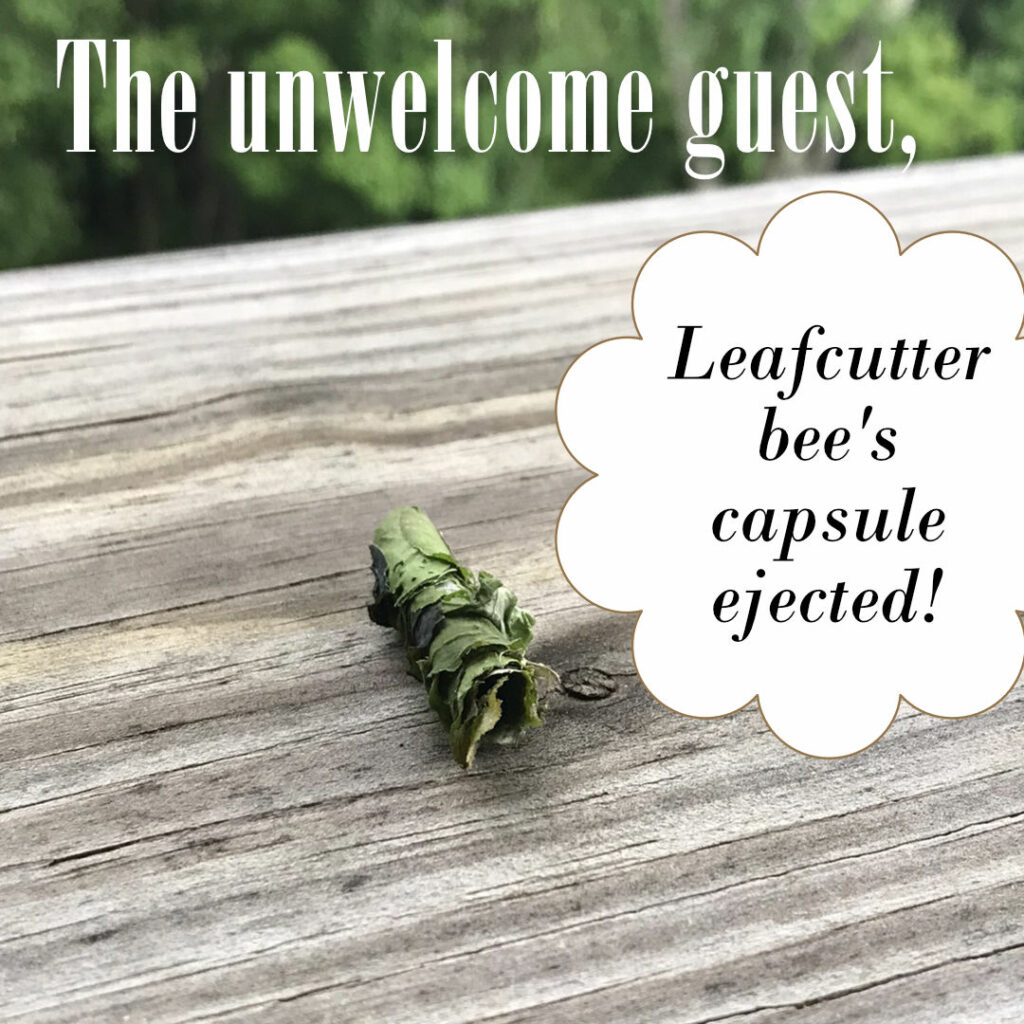
Philosophical Questions
How much did the carpenter bees actually mentally communicate with me and how much was just my intuition processing information? Could they really have wanted a high-traffic location because of the chance to change hearts and minds about the hated borer bee? I have not had the same sense of distinct psychic communication with them like I have with wasps, hornets, etc. despite the series of communications and interactions that resulted in placing the bee house. Nor have I produced truly dramatic results like getting them to relocate in uncharacteristic ways. Indeed, the friend with the borer bees in her eaves was skeptical. I think she thought, as I too still kind of wonder sometimes, that they simply preferred the superior shelter of our covered deck. After no bees took up residence in the bee houses on her property, she decided to call it quits on the experiment and call the exterminator instead. So I failed to help those bees, and I realize it will take more work for me to come up with better methods for ordinary homeowners.
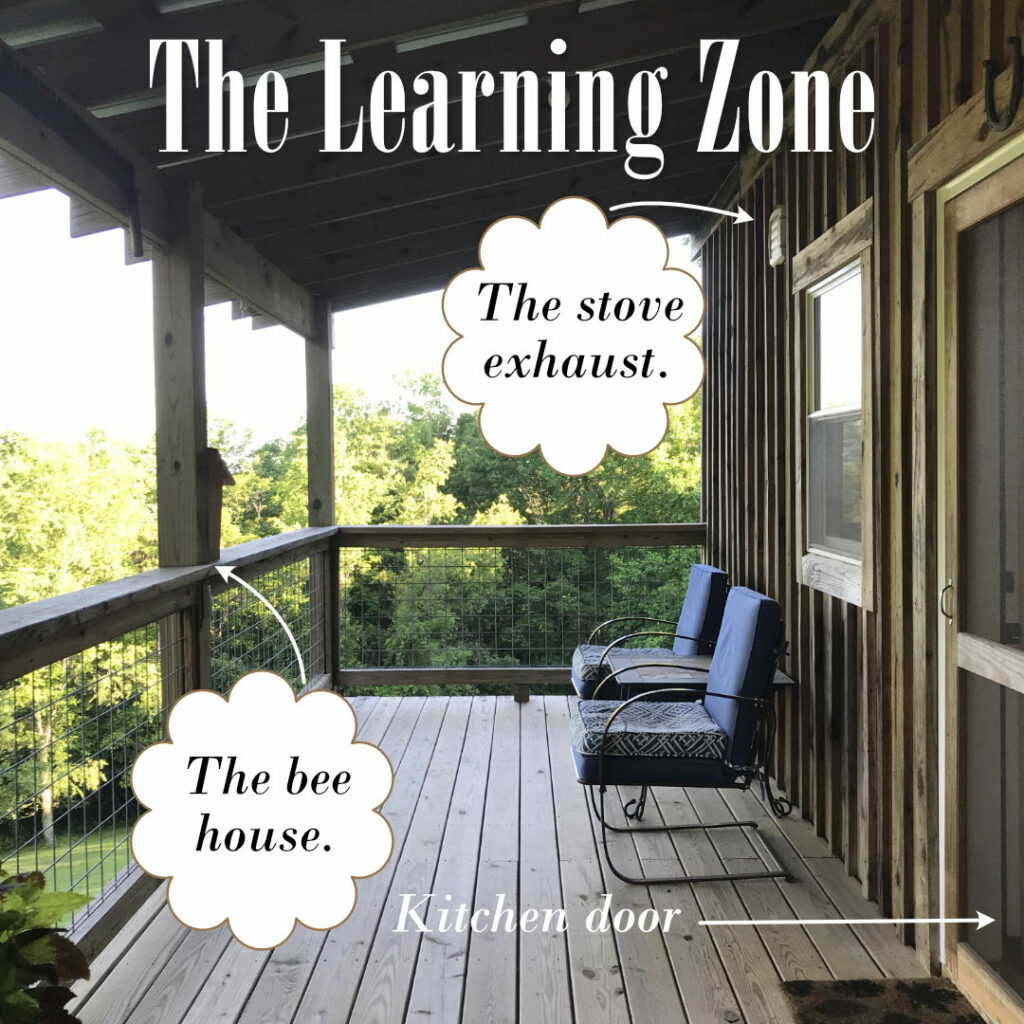
I understand. Even Michael is nervous that we’ll create an infestation, and they’ll spread out in droves into our wood siding. Even though he gave me a year, he keeps flinching and making little comments. But I remain convinced that carpenter bee populations are limited by the availability of good food sources–flowers. They do not eat wood! It is 100% logical that as long as you provide enough housing for the number of bees supported by flower food in your environment, you should be able to avoid an infestation.
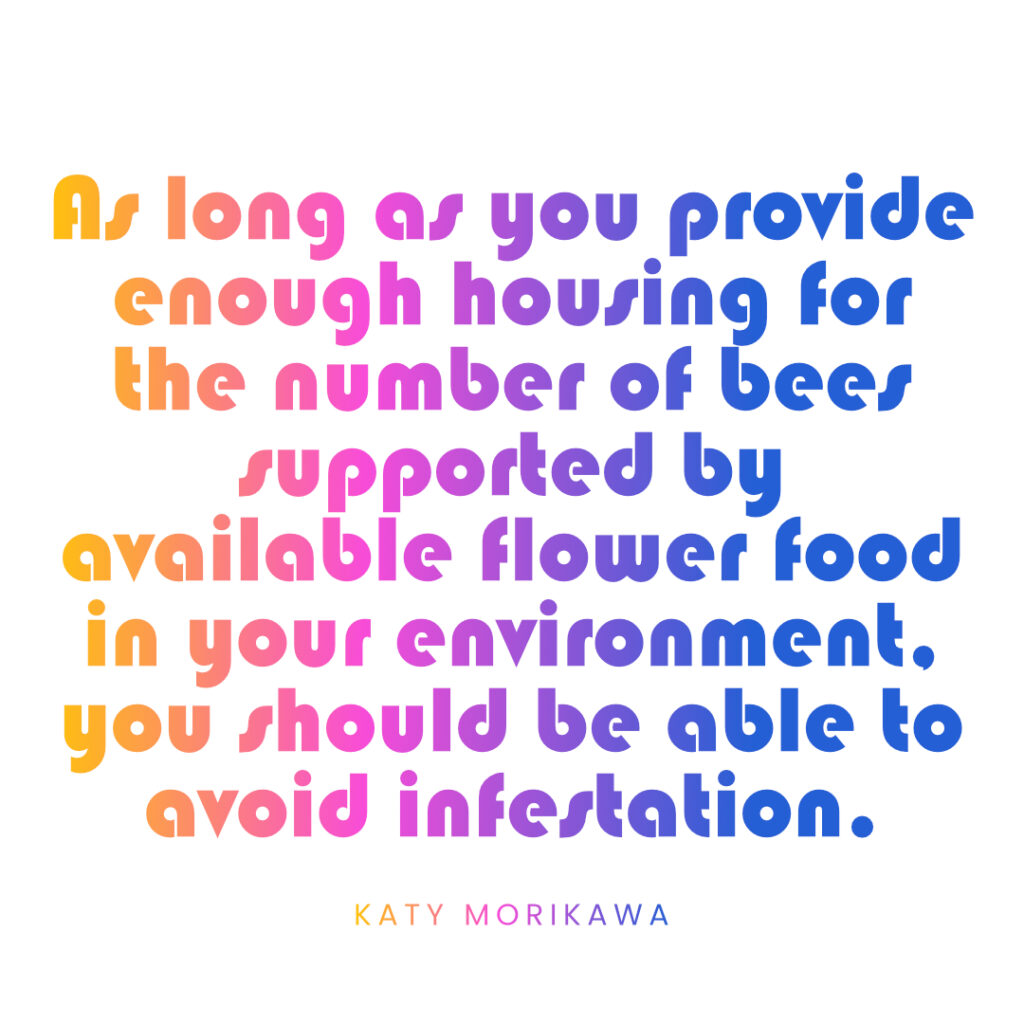
In the next post, I’m going to explore some of my further research into the role carpenter bees play in the native landscape and to try to get an overview of all of that. That is Borer Bees III: Carpenter Bee as Native Pollinator (Episode 27). See you there!

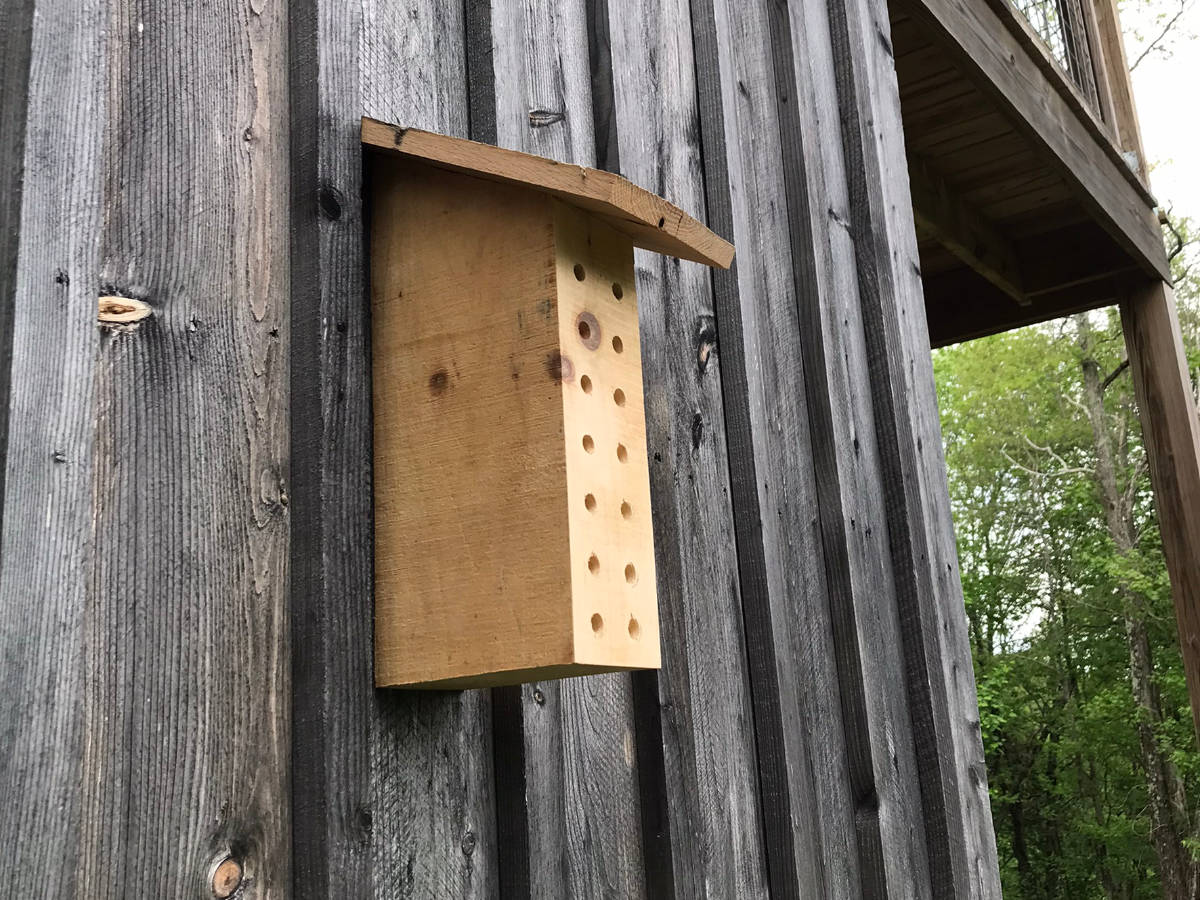
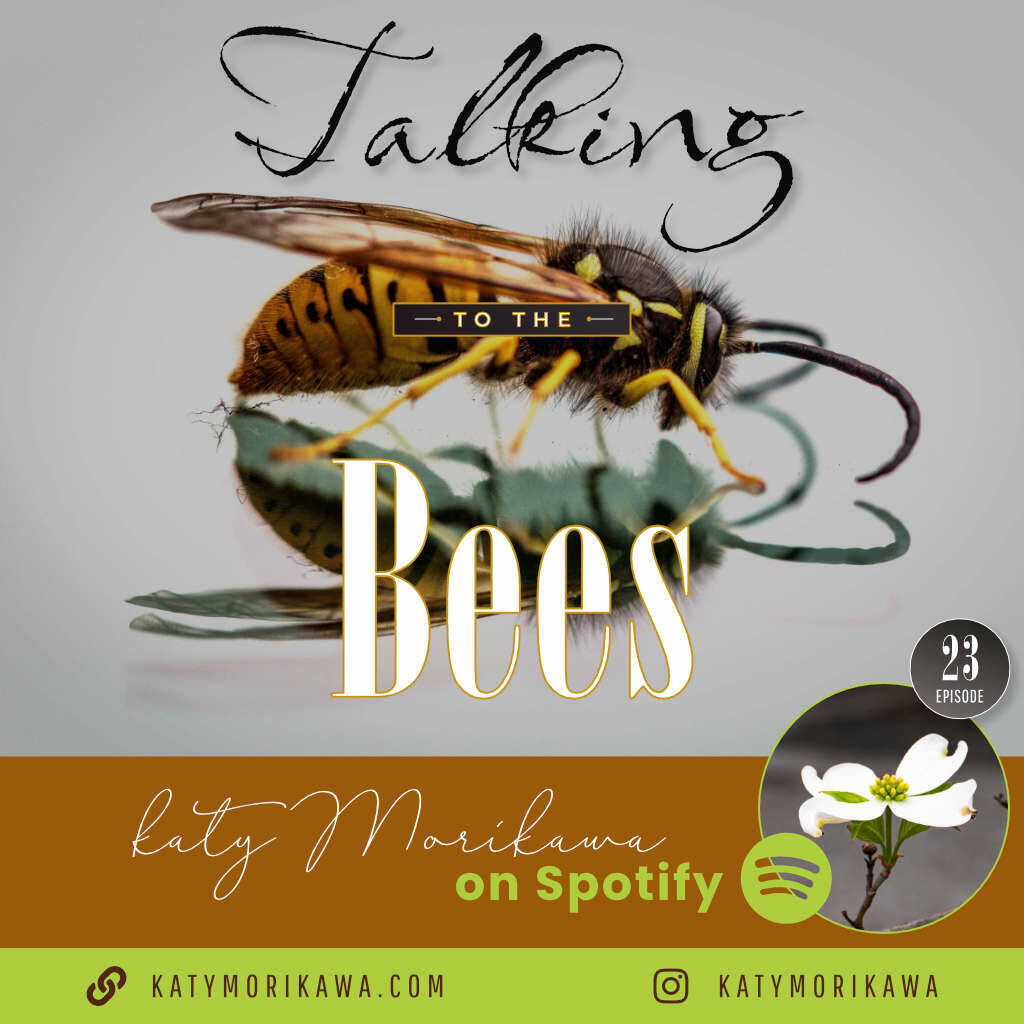
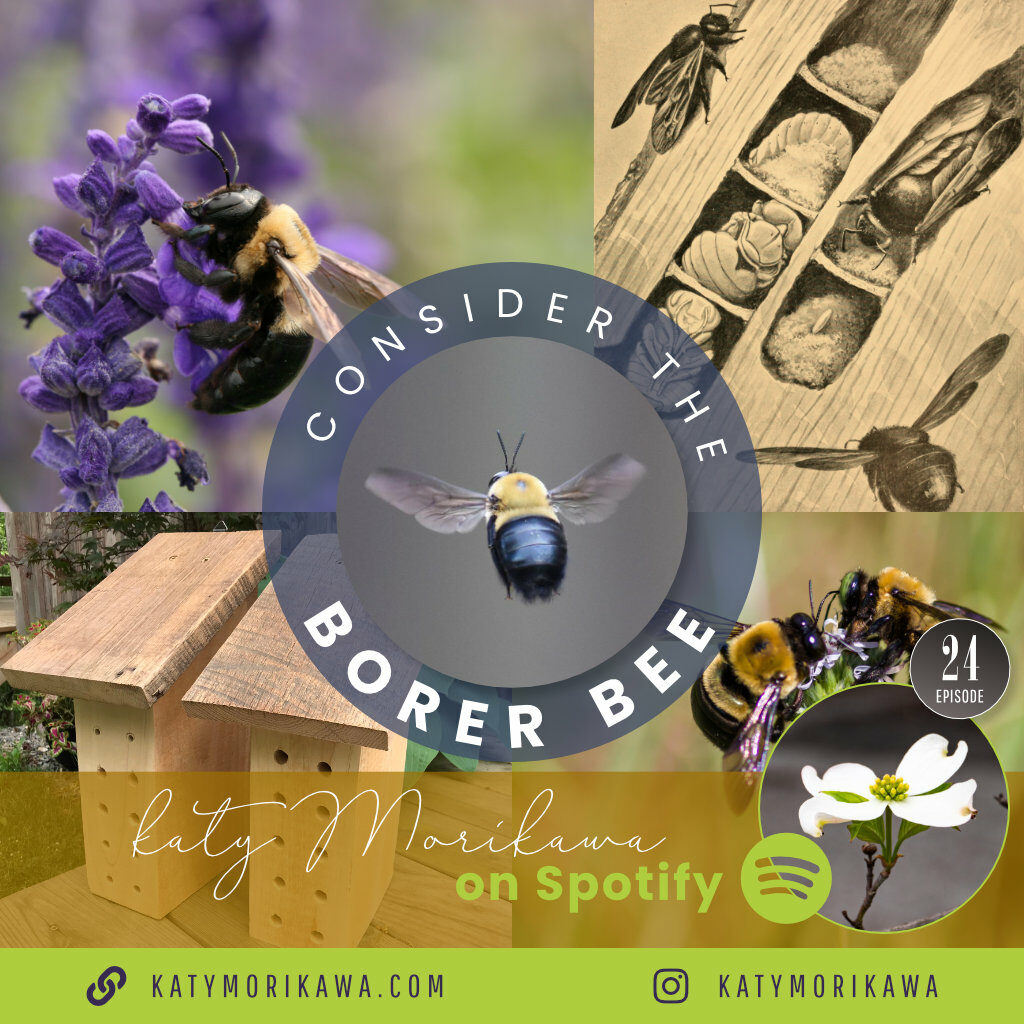
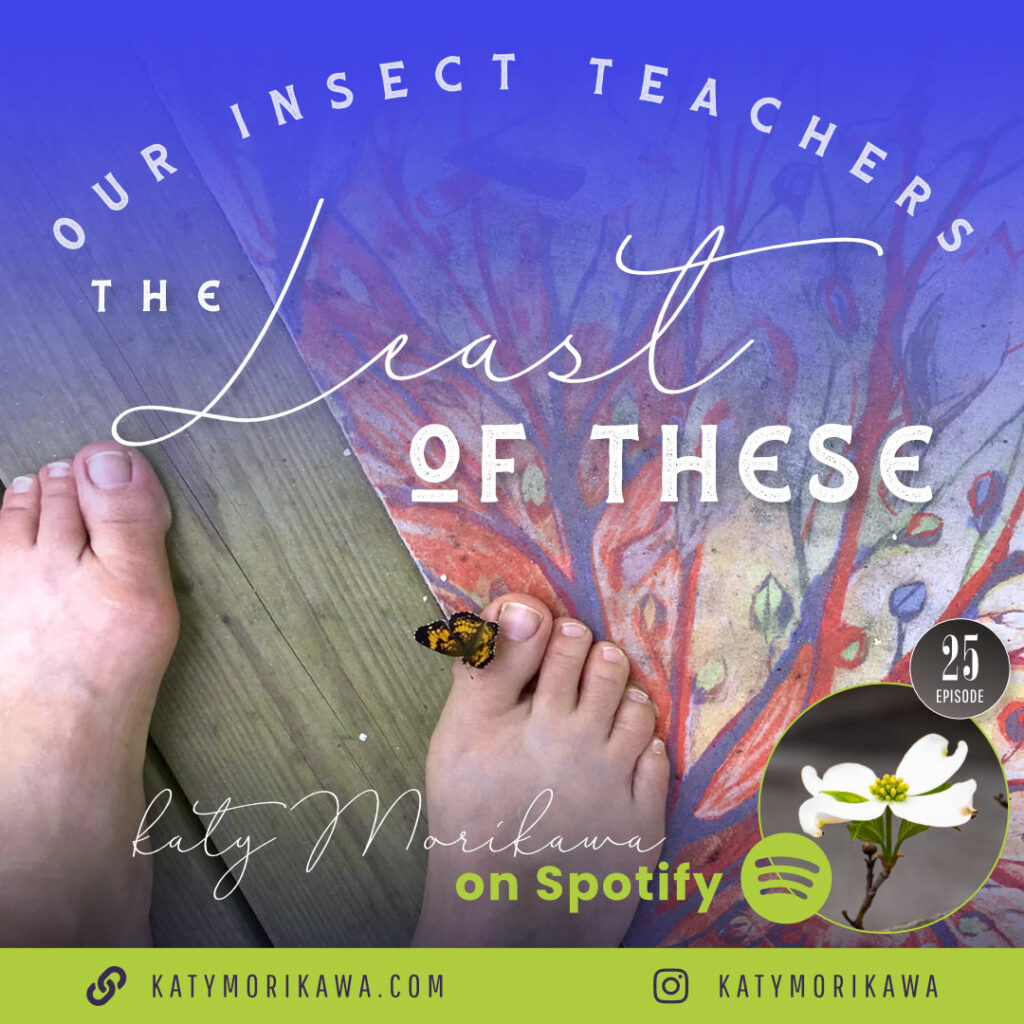


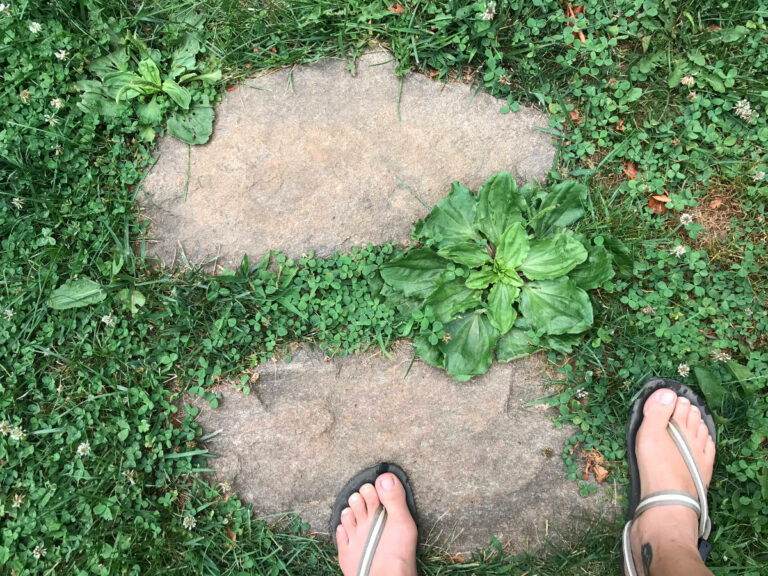
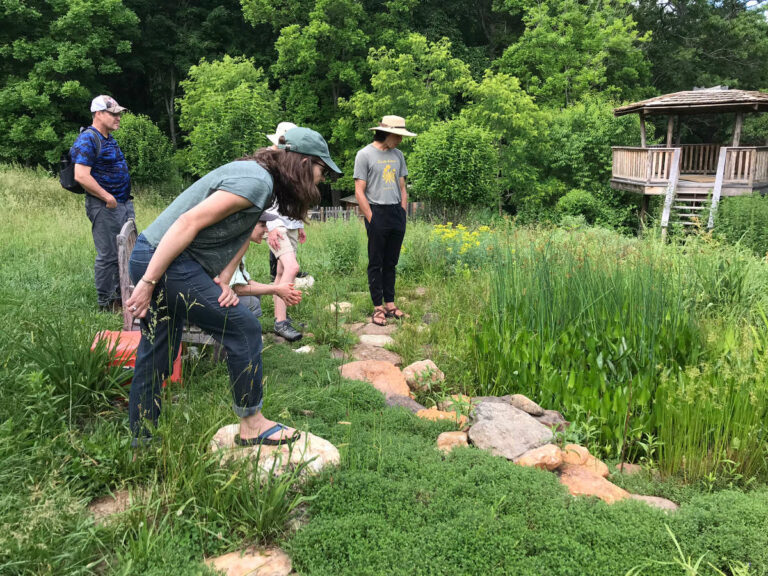
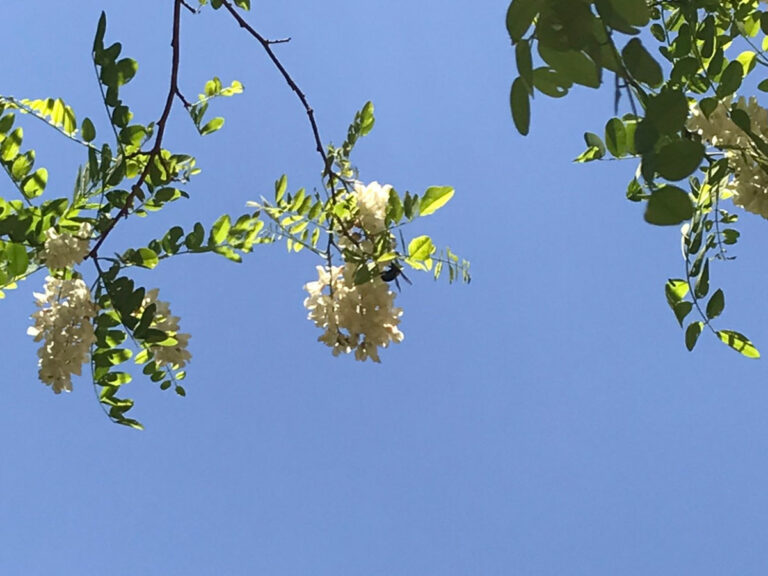
It’s nice to hear from other people that have discovered the intelligence of bees. There are a lot of other animals and creatures this works with, too; think of all the Native American stories about people who spoke with animals. Keep up the good work!